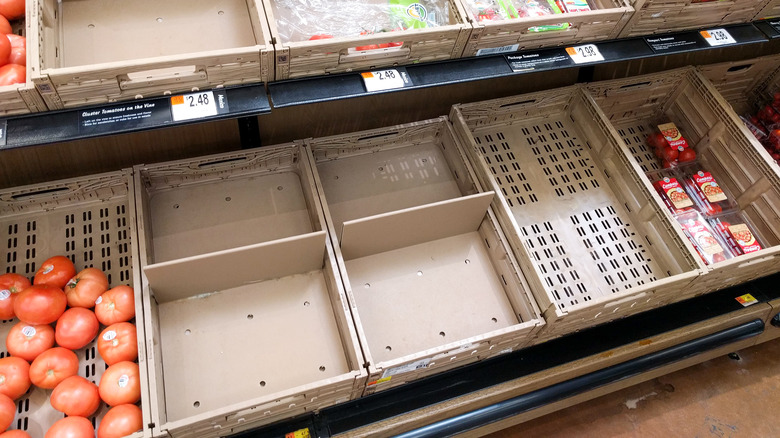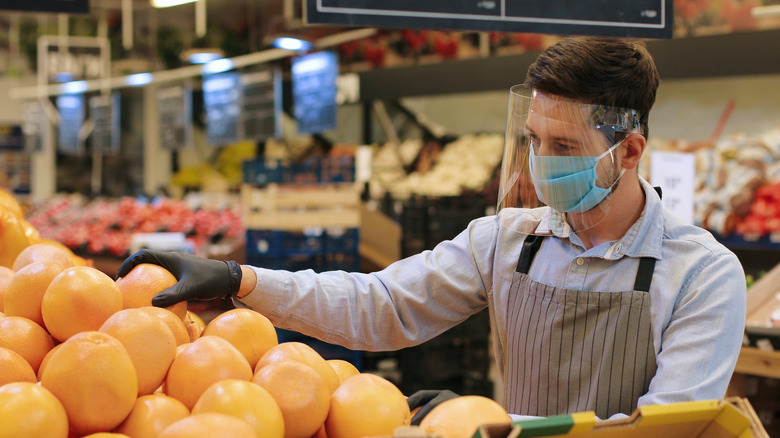Why The US Is Still Facing Food Shortages Caused By COVID-19
If you think back to the early days of the COVID-19 pandemic, chances are you'll remember empty shelves and toilet paper hoarding. But a quick trip to your grocery store today might give you flashbacks to those March 2020 experiences. Though you might believe the backlogged supply chain is responsible for empty grocery store shelves, that is actually only part of the issue.
According to USA Today, the supply chain is not the only thing to blame for widespread shortages. "Shortages depend on the item, store, and region of the country," the senior director of institutional credit at AgAmerica, Curt Covington, explained to the outlet. "Shortages can be driven by supply chain issues, consumer behavior, or environmental factors, so it's hard to pinpoint what will be affected next." But even if your grocery store does have the items you are looking for in stock, it is still possible they will be missing from shelves.
How the pandemic is still affecting grocery stores
While the virus continues to mutate and spread, it also continues to be part of the problem when it comes to bare shelves. According to ABC7, a major reason grocery stores continue to have low inventory ready for customers to choose from is staff illness. Sean Connolly, the president and CEO of Conagra Brands, explained to investors that many employees have been out from work due to the highly-transmissible Omicron variant of COVID-19. But farms and manufacturing plants are not the only stop in the food supply chain causing bare shelves.
Grocery store employees are also experiencing a major spike in Omicron-related absences, and it is not just a few workers missing either. According to ABC7, 8% of employees at Connecticut-based grocery chain Stew Leonard's were away from work due to illness or quarantining after exposure. That's roughly 200 employees who cannot report to work due to COVID-19. To put that into perspective, the typical percentage of absent employees for the small chain is just 2%.
So know that even if it's able to get shipments on time, your local grocery store is likely understaffed. The workers are trying their best to get items on the shelves, but you may have to go to more than one location to get what you need for a little while longer.

